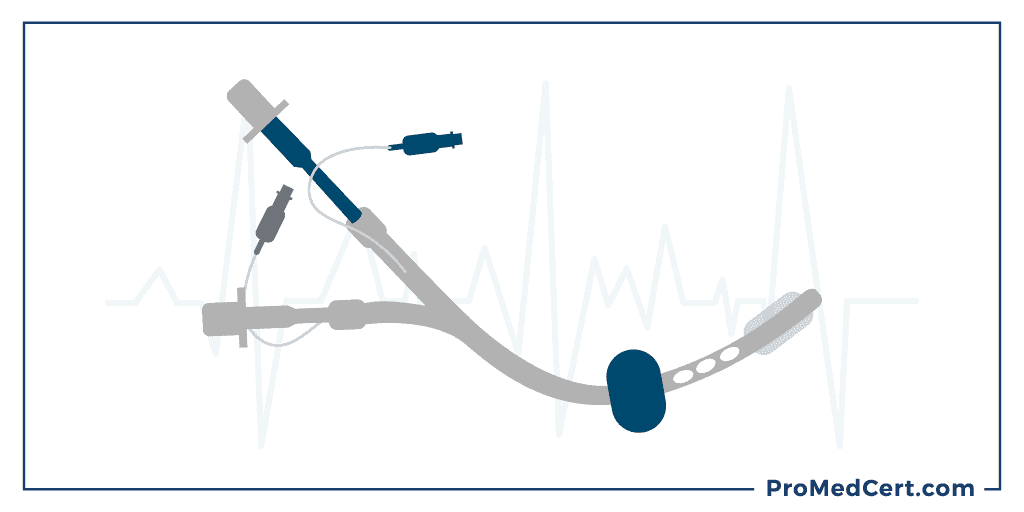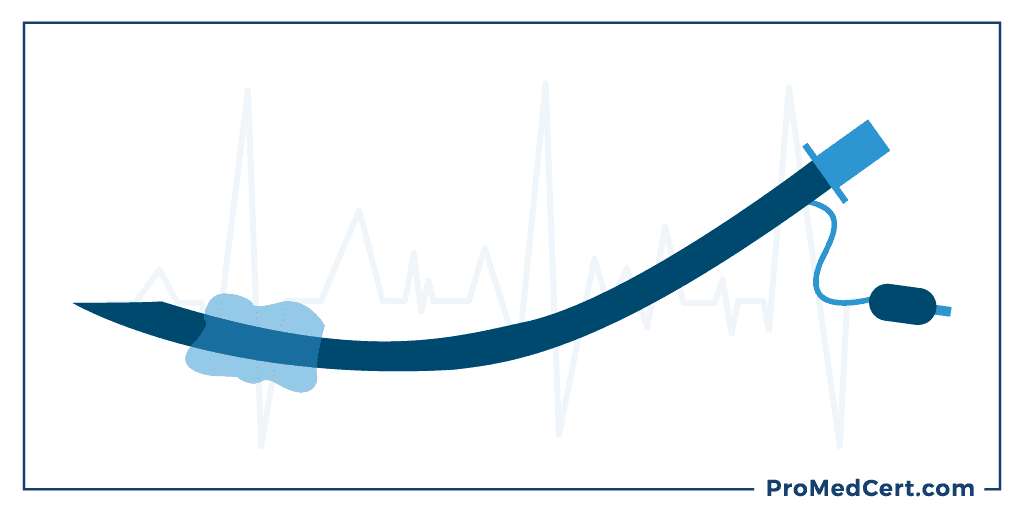Advanced Airway Options and Best Practices

One of the major distinctions between Basic Life Support (BLS) and Advanced Cardiac Life Support (ACLS) is the introduction of the advanced airway.
In particular, endotracheal intubation.
While many different kinds of health care providers may pursue their ACLS certification, only certain ones – such as doctors and respiratory therapists - are actually trained in this advanced technique.
Even if you aren’t among this group, however, understanding how to properly intubate a patient, as well as what equipment is needed, can come in handy should you ever be called upon to assist with the intubation process.
When working in the field, intubating a patient can be far more difficult and also comes with a much higher degree of risk.
Furthermore, it doesn’t necessarily offer better oxygenation when compared to airway management using a simple bag valve.
EMTs, nurses and other medical professionals who are trained in ACLS do not always have the skills nor the scope of practice to apply this treatment method, which is why learning other strategies for airway management is of the utmost importance.
While bag valve mask ventilation is technically considered to be a technique of BLS, it is still widely considered to be the best way to manage a patient’s airway – particularly when it is being administered outside of the hospital.
In emergency rooms, hospital wards and intensive care units (ICU), physicians are typically on hand to perform intubation.
No one without in-depth training and appropriate state licensure should ever attempt intubation.
Why Bag Valve Mask is Superior

When in the field, utilizing the bag valve mask method of ventilation is generally more effective than making an attempt to intubate a patient.
There are several reasons for this.
First, inserting an ET tube requires both a great deal of skill as well as a significant amount of time.
Obviously, when it comes to a cardiac arrest or code, time is of the essence.
Intubation can take the attention away from other resuscitation activities that are just as, if not more important.
Aside from those who work in a trauma center, most health care professionals don’t encounter cardiac arrest situations on a frequent basis.
As such, many who work in medical settings to not possess the necessary experience to successfully and safely insert an ET tube.
This greatly increases the risk associated with the procedure and makes the likelihood of complications related to the intubation much higher.
In fact, inserting an ET tube can involve complications even when performed by an experienced practitioner.
With a bag valve mask, on the other hand, the airway can be successfully maintained and rescue breaths can be administered more effectively.
Even in situations for which intubation might not require a great deal of time to perform, the use of a bag valve mask is more favorable, provided ventilations are being delivered effectively.
This prevents the risk of complications from misplaced tubes.
In a hospital setting, ET tubes should always be placed by an experienced physician.
Even then, however, intubation should only be attempted if all other options have been exhausted.
Should the patient begin to breathe spontaneously, intubation will not be necessary.
Subglottal Intubation

Some of the more modern methods of intubating a patient include the use of devices that don’t involve intubation of the trachea.
There are a number of different devices, all of which revolve around what’s known as the subglottal region.
What this means is that these devices are inserted up to or just slightly beyond the back of the throat, but they don’t descend as far as the lungs.
Not surprisingly, subglottal devices are easier to place than ET tubes.
They also feature a much lower risk of complications.
Of course, as with any medical device like this, proper training is essential.
One type of subglottal intubation device is the Combitube, which serves to block off the esophagus and redirect air into the trachea.
This results in fewer instances of aspiration, better ventilation during ACLS and improved airway isolation.
From a training standpoint, learning how to use a Combitube correctly is much easier, particularly since it doesn’t pose the same risks as an ET tube insertion.
The main concern with this type of device, however, is the amount of precious time it takes.
Endotracheal Intubation

Another option for airway management is endotracheal intubation.
When this method is carried out by an inexperienced individual, it can result in serious trauma related to the oropharynx.
It can also lead to accidental intubation of the esophagus and ultimately injury to the lungs.
When a patient is in the hospital, the proper placement of a tube may be assessed using a number of techniques, including x-rays.
Many of these methods for verifying placement, however, are not available when in the field.
If not performed correctly, providing breaths to the patient could actually do more harm than good.
That’s why using the bag valve mask is preferred.
If an ET tube is required, the practitioner treating the patient must be absolutely certain that he or she can handle the intubation process.
Getting the hang of properly inserting an ET tube can take a great deal of practice.
Similar to IVs, the more practice an individual gets at intubation, the better they will become at performing that skill.
This is why paramedics often shadow in the OR and/or assist when doctors or anesthesiologists are intubating patients, such as in preparation for surgical procedures.
Anyone faced with the need to insert an ET tube when in the field shouldn’t hesitate to do so, but only when adequately trained and experienced, and only when it’s absolutely necessary.
As always, the risk to the patient should always be taken into consideration.
Only through an honest self-assessment of one’s skills will the right choice for the patient ultimately be made.
Conclusion
Airway management is just one of the many treatment methodologies that you will learn when taking your ACLS course.
To find out if you know enough to pass the exam, we recommend taking a practice test first.
There you will be able to determine whether you’re truly ready or whether more studying – on this or other topics - is warranted.

